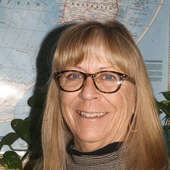- Research tips and McCook Brick Company- solid as a brick (12/16/24)
- Big Give appreciation and some railroad characters (11/15/24)
- George Randel becomes a landowner, gets married, and takes in a Buffalo Bill show (9/20/24)
- The memoirs of George F. Randel, early settler of Red Willow County (9/12/24)
- Vietnam War Memorial honors Nebraskans who served (6/13/24)
- McCook business promotions - just prior to 1893 stock market crash (5/30/24)
- Shall we dance? Meet you at the Gayway (12/8/23)
DNA test results in ancestry research may be surprising
Friday, January 15, 2016
Susan Doak
Southwest Nebraska Genealogy Society
The DNA results are back and I am 71 percent certain I'm who I think I am. As I mentioned in an earlier article, my cousin (daughter of my father's sister) had submitted DNA from her mother, father, son, and her own DNA. She and I are considered first cousins and yet her DNA results had shown a higher percent of German lineage than Irish or Great Britain. I suspected mine would be quite different, and it was.
All of these tests were done through Ancestry.com. Tests submitted may be tied to an existing family tree in Ancestry and can be administered by someone other than the person submitting the DNA, as my cousin is doing for her parents and son.
There was an element of surprise in my results which showed Great Britain, Ireland and Scandinavia as my main three lineages. The Scandinavia surprised me until I looked at a migration map. Recently my research into mother's Davison line has led me to believe that her father was 100 percent Scotts-Irish. If you look at the geography of Ireland, Scotland, England, and Wales, you find the Viking's travel routes led them into the islands surrounding these countries and over the centuries they settled, becoming part of the bloodlines. There is the Scandinavian connection, plus another reinforcement of my theories concerning that Scottish ancestry.
Since I did my test through Ancestry, I can only speak to what results they provide after the testing is matched up. My test matched me with 143 other people that could be related from first cousins through eighth cousins. These matches were rated from extremely high reliability to good. Prior to doing the tests, I had linked up with several people whose family trees appeared to be down the same lines as mine and this test showed those links to be correct in every case where they had also provided DNA to be tested. What surprised me was the amount of people who were appearing to be just as closely related and yet I had never been connected with them through their trees! One such person is listed as a second cousin and that, at least in my family, is someone I should have already known! To explain, first cousins share grandparents, and second cousins share great-grandparents and so on down the line.
Included in the big picture were also nine DNA "Circles" for matches of ancestors listed in my family tree. One of my circles is for Christopher Stophel Reed who is my fourth great-grandfather. Ancestry has put 20 members in this circle, based on DNA matches and family tree evidence that they are related to Reed. Of the 20, one is considered a third great-granddaughter and the rest have the same relationship as I do. This becomes important if when I match up my information with their tree, they have evidence (birth, death or marriage certificates) that is indisputable.
Here is the good and bad about DNA and family trees on ancestry. Every time someone enters information concerning a person, that information is passed on as a "hint" to each person who shares a relationship with that ancestor. Ancestry.com does not vet information, so if it is wrong and you just push a button and add it to your ancestor as a fact, it becomes a rabbit, scampering about sharing miss-information with the ancestry world!
I'm hoping at least one of the DNA "relatives" I am now linked to have concrete facts concerning my "George Davison," but no matter what, it's going to be fun exploring this new genealogical clue to my family's past!

